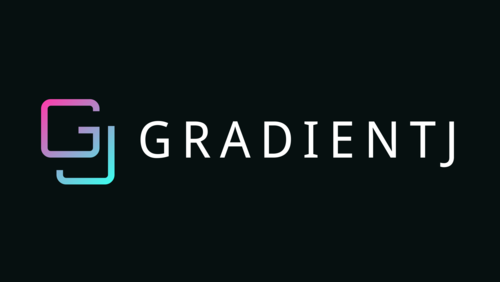GradientJ: Empowering Teams to Build and Deploy Large Language Model Applications at Scale
In recent years, large language models (LLMs) such as GPT-3 have revolutionized natural language processing, enabling machines to generate human-like text that can be used in various applications. However, building and deploying LLMs at scale can be a challenging task, requiring specialized skills and expertise. GradientJ aims to simplify this process, empowering product teams to build and deploy LLM applications with ease. In this article, we will explore GradientJ in detail, including its features, benefits, and how it can help product teams leverage the power of LLMs.
What is GradientJ?
GradientJ is a web application designed to help product teams build, compare, and deploy prompts for large language models like GPT-3. With GradientJ, teams can create and monitor their LLM applications in production, making it easier to iterate and continuously improve their models.

GradientJ Evolves: Introducing Velos AI for Back Office Automation
In a significant transformation, GradientJ has been rebranded as Velos AI, reflecting its broader mission to revolutionize how businesses automate complex workflows. Velos AI focuses on enabling non-technical teams to automate intricate back-office processes that traditionally required extensive manual input or were outsourced to overseas workers. This evolution expands the scope of the platform, offering solutions tailored to key industries such as insurance, finance, and healthcare.
Who is GradientJ for?
GradientJ is for product teams that are considering using LLMs in their products and are looking for guidance on how to get started. It is also for teams that are already using LLMs and want to level up their workflow with faster iteration, better organization, easy cost and performance comparisons, and the on-ramp to fine-tuning.
The Next Chapter: Velos AI’s Industry-Specific Applications
Insurance: Velos AI empowers insurance providers to handle unstructured data in tasks such as underwriting, claims processing, and regulatory filings. By automating these processes, Velos drives growth and operational efficiency, allowing teams to focus on higher-value activities.
Finance: In the finance sector, Velos AI extracts due diligence insights from customer data rooms and transforms unstructured data into actionable investment signals. This helps mitigate risk while unlocking new revenue opportunities.
Healthcare: For healthcare organizations, Velos streamlines workflows such as insurance form processing, extracting billing codes from patient transcripts, and simplifying patient onboarding through electronic health records (EHRs). This reduces administrative overhead, enabling healthcare providers to allocate more resources to patient care.
The Problem with LLM Deployment
Currently, the road from prototype output with ChatGPT to production-ready GPT-3 deployment is unclear and littered with potential pitfalls. Even for the teams that do get version 1 out the door, the workflow often ends up as a stitched-together hodgepodge of makeshift processes and tools. LLM deployment is a leading cause of "am I doing this right?"-itis. Symptoms include a text document with examples copy-pasted into the OpenAI playground, a prompt comparison process that consists of an eyeball test followed by "looks better-ish," hours spent tweaking a prompt on one example only to find, in the end, it breaks on all the others, and nightmares of users getting nonsensical or offensive output from a hallucinating LLM.
How GradientJ Solves the Problem
GradientJ provides a prompt engineering interface that automatically suggests starting points or improvements to your prompts. It tracks prompt versions and benchmark examples so you can always compare and deploy the best iteration. GradientJ also deploys to your API endpoint with automatic cost and performance tracking in one click, making it easy to monitor your LLM application in production.
Features of GradientJ
Prompt Engineering Interface
GradientJ's prompt engineering interface helps product teams create effective prompts for their LLMs. The interface suggests starting points or improvements to your prompts, making it easier to get started. It also tracks prompt versions and benchmark examples, enabling teams to compare and deploy the best iteration.
Benchmarking
GradientJ enables teams to benchmark their LLMs against other providers and open-source alternatives. This feature helps teams understand how their models perform against other models, allowing them to continuously improve their models.
Automatic Deployment
GradientJ enables teams to deploy their LLMs to their API endpoint with one click. The platform automatically tracks the cost and performance of the deployment, making it easy to monitor the LLM application in production.
Collaboration Tools
GradientJ provides collaboration tools that enable teams to work together on their LLM application. This feature includes team management, access control, and commenting, making it easy for teams to collaborate effectively.
Security and Privacy
GradientJ takes security and privacy seriously. The platform encrypts all data in transit and at rest, ensuring that data is secure. It also provides access controls, ensuring that only authorized team members can access the LLM application.
Velos AI: Beyond Traditional Automation
Velos AI differentiates itself from traditional automation tools and Business Process Outsourcing (BPO) services by tackling workflows that demand intelligent decision-making, adaptability, and scalability.
- Velos vs. UiPath: Unlike robotic process automation (RPA) platforms such as UiPath, Velos can process complex and dynamic data sources. Its AI assistant intelligently adjusts to variations in data, providing robust and flexible solutions that go beyond simple task automation.
- Velos vs. Microsoft Power Automate: While Power Automate works well within the Microsoft ecosystem for basic automations, it falls short when handling external data services or multi-step workflows. Velos excels in processing diverse documents and executing sophisticated workflows, making it a more comprehensive platform.
- Velos vs. BPOs: Velos eliminates the human bottlenecks associated with BPOs. Instead of relying on human workers prone to errors and delays, Velos leverages AI that continuously learns and scales efficiently. This ensures faster turnaround times and greater accuracy, helping businesses adapt to scaling demands without retraining staff.

Benefits of GradientJ
GradientJ provides a streamlined workflow for building, comparing, and deploying prompts for large language models, making the process of deploying these models at scale much easier. Here are some of the benefits of using GradientJ:
Faster iteration: GradientJ's prompt engineering interface enables faster iteration by suggesting starting points or improvements to your prompts. This eliminates the need to start from scratch every time you want to improve your prompts, saving you time and effort.
Better organization: GradientJ helps you keep track of your prompt versions and benchmark examples, so you can always compare and deploy the best iteration. This makes it easy to keep your prompts organized and ensures that you are always using the most effective version.
Easy cost and performance comparisons: GradientJ provides automatic cost and performance tracking, so you can see how your model is performing and how much it is costing you. This makes it easy to compare the performance of different models and make informed decisions about which one to use.
Deploy to your own API endpoint: GradientJ allows you to deploy your models to your own API endpoint with just one click. This makes it easy to get your models up and running quickly and ensures that you have full control over your deployment.
Human feedback: GradientJ enables you to receive human feedback on your models, which can be used to continuously improve your models. This is particularly useful for detecting and addressing issues such as nonsensical or offensive output.
Use Cases for GradientJ
GradientJ is a versatile tool that can be used in a variety of applications. Here are some use cases for GradientJ:
Human resources: GradientJ can be used in human resources to process job applications, resumes, and cover letters. This can help to streamline the hiring process and ensure that all applicants receive a fair evaluation.
Customer service: GradientJ can be used in customer service to process customer inquiries and provide personalized responses. This can help to improve customer satisfaction and reduce response times.
Content creation: GradientJ can be used in content creation to generate headlines, article summaries, and even entire articles. This can help to streamline the content creation process and ensure that your content is high-quality and engaging.
Language translation: GradientJ can be used in language translation to provide accurate and natural-sounding translations. This can help to improve communication between people who speak different languages and facilitate international business.
Marketing: GradientJ can be used in marketing to generate ad copy, product descriptions, and even entire marketing campaigns. This can help to streamline the marketing process and ensure that your messaging is consistent and effective.
Case Studies: How Customers Thrive with Velos AI
- AI Insurance: Leveraging Velos AI, this company seamlessly cleans and imports customer insurance data, eliminating the need for valuable engineering resources.
- Private Equity Firm: Velos assists a private equity firm in analyzing over 850 documents per company during investment due diligence, streamlining their data-intensive processes.
- Humanly: By using Velos, Humanly creates smarter, faster chatbots and drastically reduces customer onboarding time.
- Orchid: As a mental healthcare provider, Orchid relies on Velos to prepare for clinical insurance audits, ensuring compliance with minimal effort.
Conclusion
GradientJ is a powerful tool for building and deploying large language models at scale. With its streamlined workflow and powerful features, GradientJ makes it easy to build, compare, and deploy prompts for large language models like GPT3. Whether you are just getting started with language models or are looking to level up your workflow, GradientJ is a valuable tool that can help you achieve your goals. So why wait? Sign up for GradientJ today and start building better language models!
Why Velos AI is the Future of Workflow Automation
Velos AI provides a powerful alternative to traditional automation platforms and outsourced labor. Its ability to learn from single examples, adapt dynamically to complex workflows, and audit its work makes it a valuable partner for businesses aiming to streamline operations, reduce costs, and enhance efficiency. As more companies embrace AI-driven automation, Velos is positioned as a leader in transforming how back-office processes are managed.
GradientJ may have started with a focus on prompt engineering for LLMs, but with its evolution into Velos AI, it has grown into a comprehensive platform for intelligent automation across industries. Whether you’re in insurance, finance, or healthcare, Velos AI is here to help your team work smarter, faster, and more effectively.

